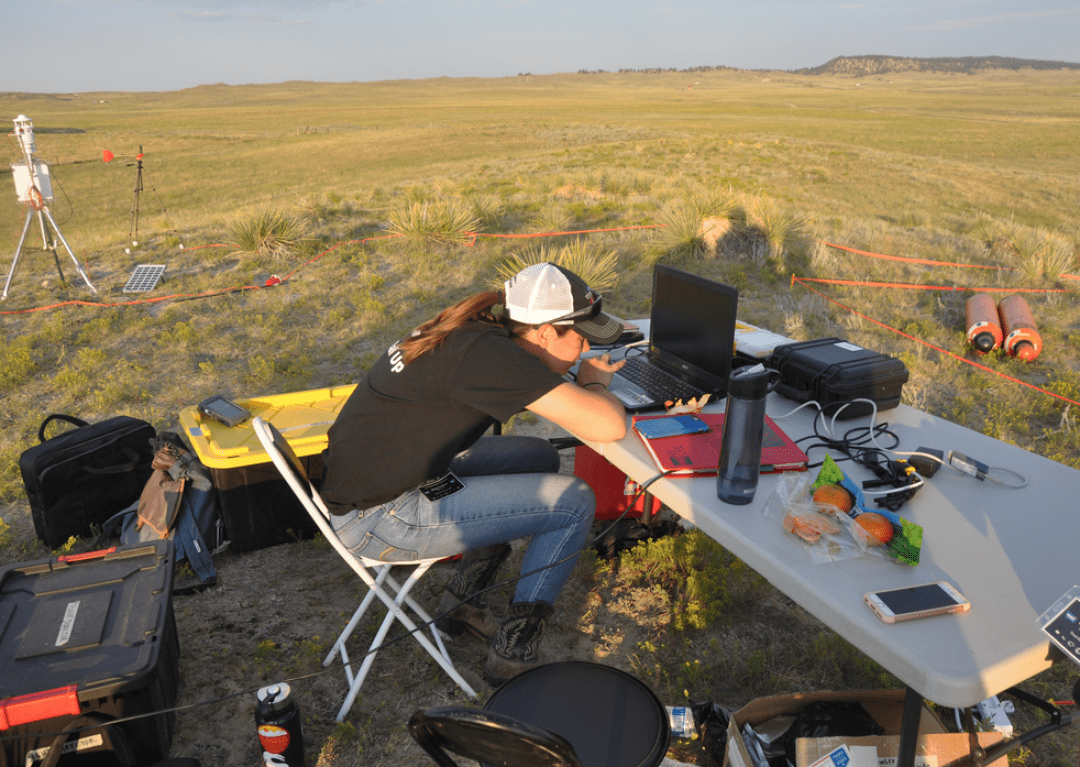MSU students study atmospheric effects of the eclipse
Wednesday Sep. 27th, 2017
When Montana State University students watched a wall of darkness rush across the central Wyoming prairie at supersonic speed, then wash over them and bring a sudden chill to the summer day, they couldn’t contain their awe.
“We were all going crazy,” said Jaxen Godfrey, who was one of five MSU students on a Montana Space Grant Consortium team that included students from University of Montana, Chief Dull Knife College and Miles Community College.
Their experience of the Aug. 21 total solar eclipse lasted only about two minutes. But the bulk of their research has just begun.
“We have all this data to go through,” said Godfrey, a sophomore majoring in physics in the Department of Physics in MSU’s College of Letters and Science.
To study how the atmosphere responded to the sudden, midday darkness brought on by the eclipse, the team launched 19 helium-filled balloons. Each carried a small device called a radiosonde, which measured temperature, pressure and humidity as the balloons ascended to altitudes of 80,000 feet or more.
Total solar eclipses do unusual things to air and clouds, but the effects in the upper atmosphere aren’t well documented or explained, according to Jennifer Fowler, Montana Space Grant Consortium’s assistant director. For instance, the celestial phenomenon is thought to change atmospheric waves that affect everything from wildfire behavior to wind turbine performance.

“They’re like waves on water,” Fowler said. “There’s a theory that says that these waves are generated by the eclipse itself ... but nobody had measured them during an eclipse. That’s exactly what we decided to try and do.”
The experiment was part of a larger effort called the Eclipse Ballooning Project, which MSU-based Montana Space Grant Consortium started in 2014. The project’s main activity - involving 55 teams from across the country - was livestreaming high-altitude video of the moon’s shadow crossing the Earth using camera-equipped balloons. Fowler proposed the radiosonde experiment as a way for the project to address a significant scientific question.
Some of the 55 livestream teams launched radiosonde balloons, and Fowler helped recruit an additional 12 teams. In total, the teams launched 40 radiosondes, from locations that included the Oregon coast and St. Louis.
During the eclipse, Fowler was in Wyoming with the Montana team. For two days, starting on Aug. 20, the team launched a radiosonde every six hours from a site near Fort Laramie to record the atmospheric conditions before, during and after the eclipse.
During the roughly two-hour period when the moon crossed the sun, the team launched radiosondes at 20-minute intervals from Fort Laramie - which was positioned along the center-line of the eclipse’s path - as well as at two sites near the edges of the roughly 70-mile-wide moon shadow.
The students did all the work, Fowler said. She “got to sit back and enjoy the show.”
Godfrey, who was participating in the project as a summer intern with Montana Space Grant Consortium, was at the Fort Laramie site. She and a handful of other students filled the 4-foot-diameter latex balloons with helium, calibrated the radiosondes with a laptop, then downloaded the data with a handheld radio unit as the balloons took flight.
Godfrey will use their data, along with that gathered by other teams, to study how the lowest 10,000 feet of the atmosphere - called the planetary boundary layer - responded to the eclipse.
“I feel lucky to be part of something so big that happened across the country,” she said.
Ian Fleming, a sophomore physics major from Petersburg, Alaska, also helped launch the radiosondes from Fort Laramie. He will compare the data to predictions from computer models, which could help improve the models.
Currently, “simulating winds is tricky at best,” he said.
The data are also being made available to other researchers, Fowler said.
“This was great, real-world, hands-on training for students,” she said. “When they know that someone is going to use their data, they are much more engaged.”
The team launched five other balloons equipped with the livestream system and other cameras, including a 360-degree camera system designed by the students at Chief Dull Knife College in Lame Deer.
Forrest Oldman, a member of the Northern Cheyenne tribe and a freshman at Chief Dull Knife College, helped download the video livestream and relay it to NASA’s website.
“It was kind of out of my comfort zone,” he said. “That’s why I did it.”
| Tweet |